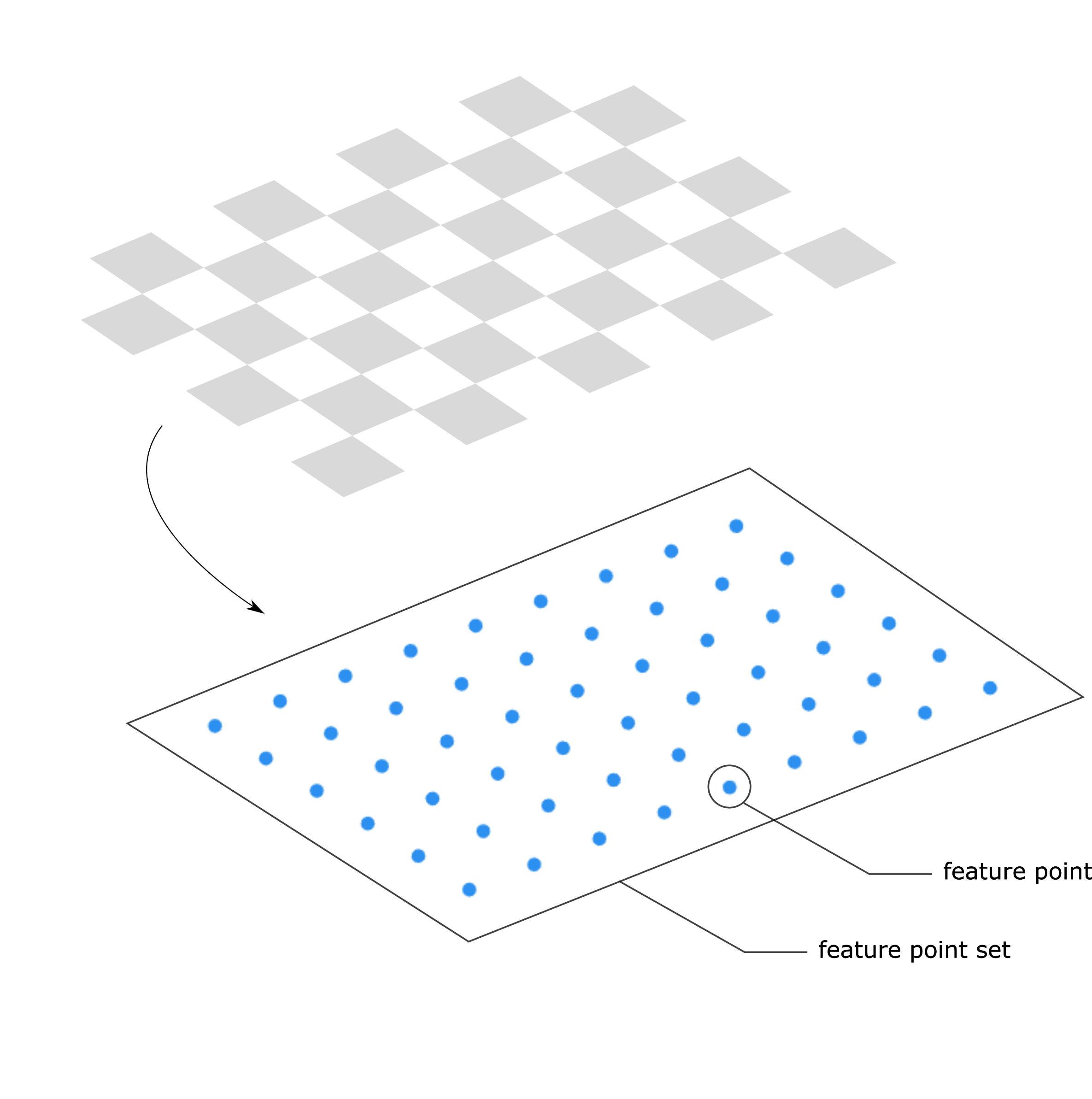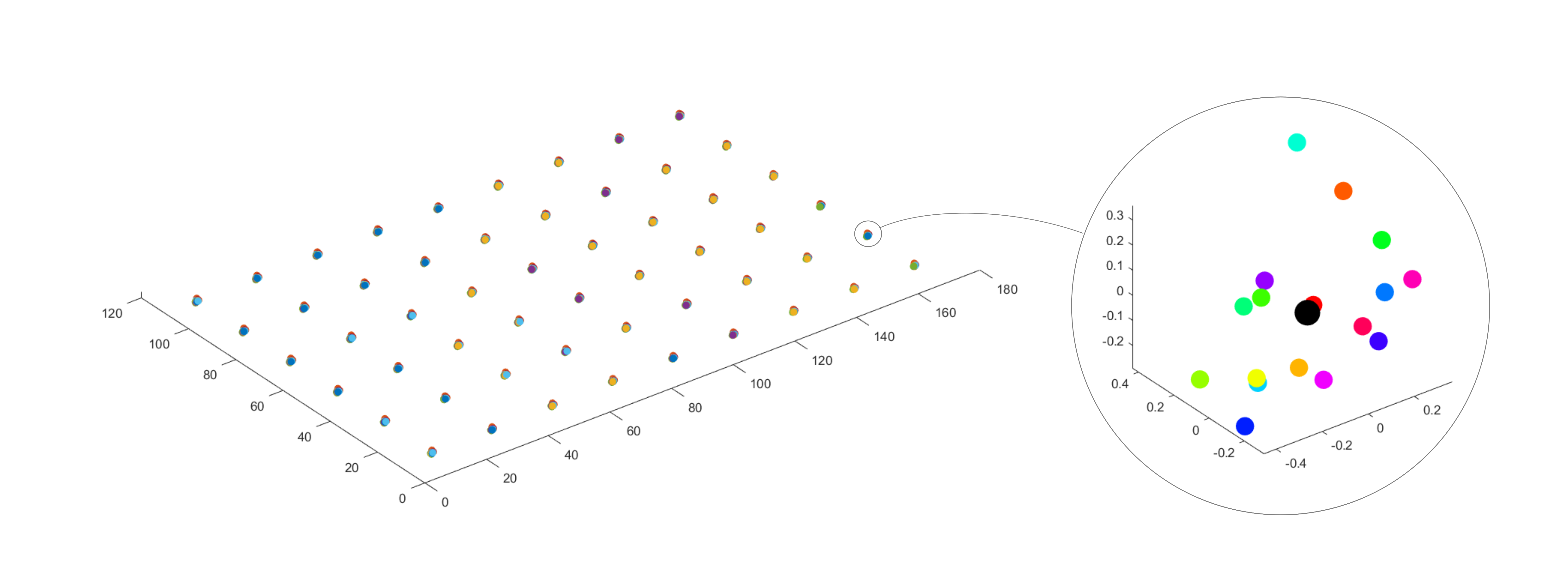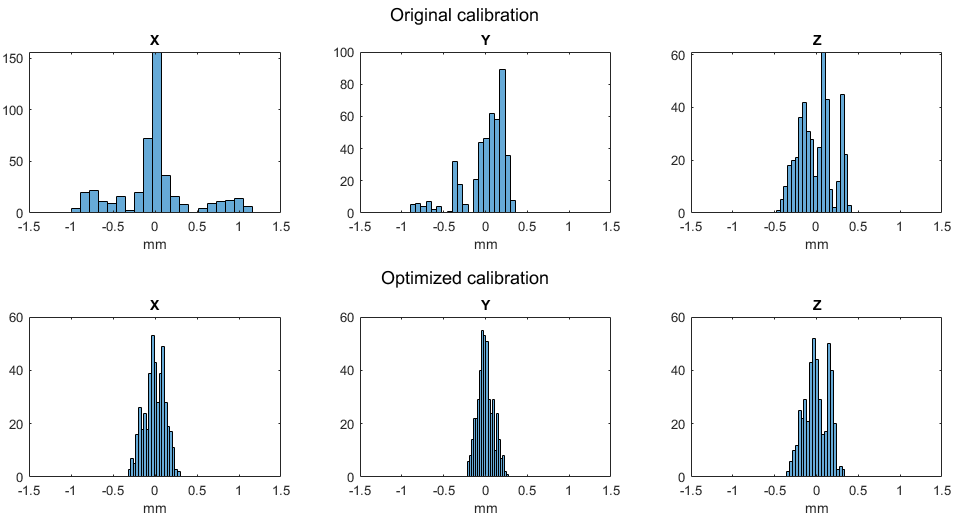Hand-Eye Calibration Residuals
핸드-아이 칼리브레이션의 성능을 평가하려면 잔차를 확인하는 방법이 필요합니다. 여기에서는 핸드-아이 칼리브레이션 잔차가 무엇을 나타내고 어떻게 계산되는지 설명합니다.
데이터셋의 각 calibration object 포인트 클라우드에 대해 Zivid 소프트웨어는 특정 개수의 특징점을 추출합니다. 이 특징점들의 집합을 특징점 집합이라고 합니다.

핸드-아이 칼리브레이션의 결과로 좌표 변환을 계산할 수 있습니다. 이 좌표 변환은 형상점 세트를 카메라 좌표 프레임에서 로봇 베이스 프레임으로 변환할 수 있습니다. 로봇 시스템의 각 요소, 즉, 카메라, 로봇 및 핸드-아이 칼리브레이션 알고리즘이 완벽했다고 가정합니다. 그런 다음 변환된 한 세트의 형상점은 데이터 세트의 다른 세트의 대응점과 동일한 좌표를 갖습니다. 시각적으로 이것은 3D 공간의 모든 형상점 세트가 겹친다는 것을 의미합니다. 이것은 현실에서는 결코 그렇지 않으며 항상 약간의 잔차가 있습니다. 시각적으로 이것은 다른 세트의 동일한 형상점이 완전히 겹치지 않는다는 것을 의미합니다. 이것은 Zivid 내부 핸드-아이 칼리브레이션 실험 중 얻은 포인트 클라우드 시각화한 이미지에서 볼 수 있습니다.

이제 Zivid 소프트웨어가 잔차를 계산하는 방법을 설명합니다.
데이터 세트의 모든 특징점 집합을 사용하여 다른 모든 특징점 집합의 산술 평균을 나타내는 참조 특징점 집합을 찾습니다. 즉, 참조 집합의 각 특징점은 다른 집합의 대응 특징점으로부터의 유클리드 거리의 합이 최소화되도록 좌표를 갖습니다. 이는 확대된 보기에서 검은색으로 확대된 구로 표시됩니다. 그런 다음 Zivid 소프트웨어는 참조 집합을 포함하여 각 특징점 집합의 포즈를 추정합니다. 마지막으로, 이동 및 회전 잔차는 참조 특징점 집합과 다른 모든 특징점 집합 간의 상대적 위치와 방향으로 계산됩니다. 이동 잔차는 두 특징점 집합을 나타내는 참조 프레임 간의 유클리드 거리로 제공됩니다. 회전 잔차는 두 참조 프레임 간의 angle-axis representation 의 각도로 제공됩니다.
팁
Zivid SDK 2.4의 핸드-아이 칼리브레이션 방법은 정확도 향상을 위해 업데이트되었습니다. 이번 업데이트로 변환 잔차에서 대략 50% 개선으로 이루어졌습니다. 이것은 회전 잔차를 약간 증가를 초래합니다. 그러나 이런 문제는 모든 점이 이제 다른 형상점 집합의 상대점과 더 가깝워졌기 때문입니다.

